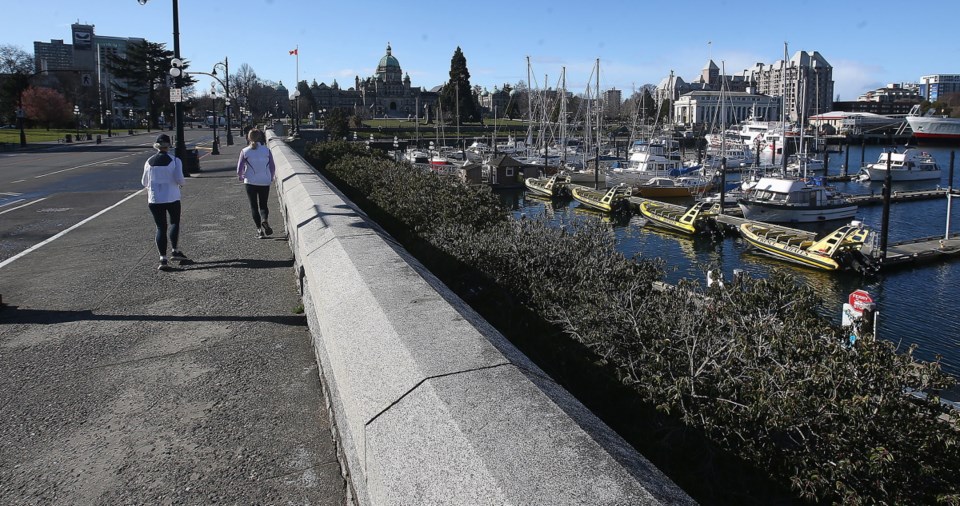The Rolling Stones released their first new song in eight years this week. It was recorded last year, but they decided it was apropos to update it and release it now: Living in a Ghost Town.
It could be Victoria’s grim new theme song, because the local and provincial tourist season is over before it began.
With borders closed, a state of emergency in force, bars and restaurants closed and cruise ships banned, tourism as we knew it is virtually outlawed.
There are various workarounds being tried in other sectors of the economy, but tourism takes the most direct hit and has the fewest recovery options. Destination Greater Victoria’s forecast of the damage is staggering.
Projected losses from an almost total absence of visitors this season will come to $1.4 billion, that office calculates.The job losses will run between 19,800 and 22,500, amounting to a wage loss of between $605 million and $850 million.
The various levels of government will sustain a tax revenue loss in the order of $375 million.
To put the estimation of losses into context, a 2018 analysis, using 2016 numbers, pegged the total value of the local industry in normal times.
It estimated the total number of local jobs derived from tourism at 22,300. There would be some differences in how the employment count and the expected loss of jobs counts were done.
But the numbers suggest the vast majority of jobs will be wiped out. The same applies to wage losses. Total value of wages in tourism was previously estimated at $729 million, which means a total loss is now expected.
Particularly striking is the context for the estimated loss in tax revenue from local tourism.
It’s $375 million. The previous estimate put the value of municipal, provincial and federal tax revenue from tourism at $376 million, meaning a total collapse is expected there as well.
The traditional response to earlier tourism downturns was to switch from marketing to visitors to appealing to locals and domestic travellers — “be a tourist in your hometown,” etc.
But there are daily warnings against all non-essential travel.
One glimmer of encouragement is that Destination Greater Victoria has had significant success in rebooking conferences and events for later on, meaning the impact is deferred and not lost altogether.
The general outlook now is to cope with the economic disaster and try to survive for the 2021 season. But those deferred bookings depend on the length of the health restrictions. The duration is an open question, but the need for extreme caution and the constant warnings of a second pandemic wave in the fall suggests longer rather than shorter.
The impact on individuals is incalculable. Governments are hit equally hard because the loss of revenue comes just as the federal and provincial governments are pouring billions into relief spending.
There have been waves of government support announced to shore up some of the wreckage of the economy. But economic recovery is still running second to the overriding public-health focus in Week 6 of the provincial pandemic emergency.
Behind the scenes, there is an on-going round of talks between government officials and operators.
The strategic dilemma is that the pandemic struck when the industry is at its weakest point. The seasonal nature means many operators run on reserves through the winter and are running low by spring.
Destination Greater Victoria CEO Paul Nursey said Tourism Minister Lisa Beare stays in constant contact and has maintained accessibility throughout.
But the lineup for government help stretches around the block. The shape of the provincial response depends on an economic recovery task force created by government that has been holding regular conference calls for a month.
It includes 19 people, half from government, including Premier John Horgan, the rest from the private sector.
Its immediate focus is seeing money is going to the places it’s most needed. A longer-term strategy will appear at some point.
Tourism should be high up the list of priorities. Lots of sectors churn existing wealth around the province, but tourism brings in brand-new additional money.
It could be a resuscitator when restrictions are lifted — if it can be maintained until then.



